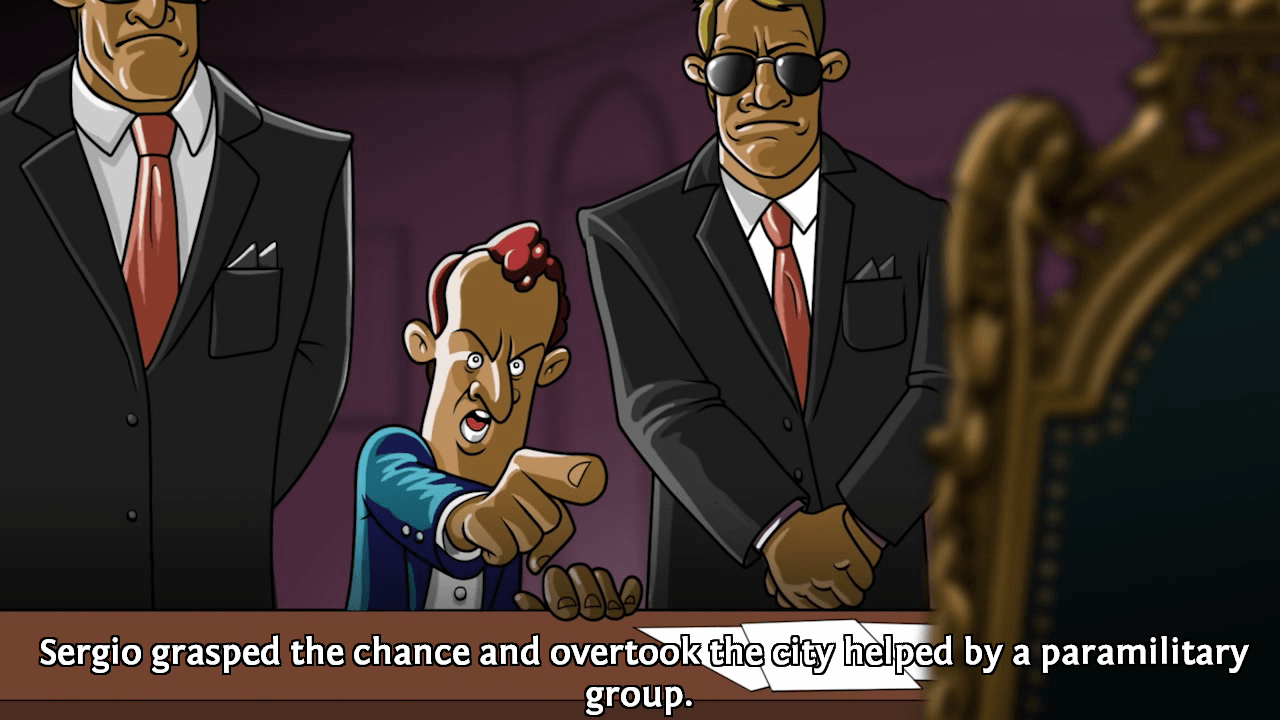Reversion – The Return by 3f Interactive
In Reversion – The Return by 3f Interactive, you play as an engineer named Christian who up to this point has lost most of his memory. You’ll fumble through dialogue options as you piece together memories of the past.
But that’s the least of your worries, because someone by the name of Sergio has taken over Buenos Aires in a dictatorship fashion, so it’s up to you, alongside a resistance group, to stop Sergio and restore order to the city. It’s a conclusion in a three-part trilogy, and I thought the game did a good job of delivering a satisfying ending.

The Plot Thickens
Reversion is a narrative-heavy game, which means a lot of your motivation to see it through relies on the game’s plot. The plot itself doesn’t do anything new or groundbreaking; in fact, it’s pretty cliche at times. But this doesn’t mean the plot is bad, it just means that it has a very “been there, done that” feel.
The characters are familiar archetypes, like the tech-savvy nerd, the old sage, and the wisecracking and nonchalant protagonist. Again, I’ll reiterate that this is not a criticism; but keep in mind that there are a lot of familiar tropes, in case you’re one who’s turned off by that.
While familiar, the characters are written solidly and voice-acted well. Across the board, I thought the voice acting was well done and did wonders to make the characters come alive. There are a number of characters you interact with, and each of them feels distinct. I have to applaud the voice actors for keeping things entertaining, because there is a lot of dialogue in this game.
Point and Click and Talk and Talk
As far as gameplay goes, it’s your standard fare of pointing and clicking to get to the next objective. Where Reversion differs is its lack of puzzle-solving and its focus on dialogue. Since there is no wrong answer that leads to death or similar negative consequences, a lot of the game is fairly easy.
Expect many locations to be unlocked by talking to people and mission objectives to be activated by clicking on particular dialogue options. This means that a lot of gameplay involves exhausting every dialogue option for every character. Thankfully, its plentiful dialogue is well-written.

This style of adventure game can be a turn off to some. It’s probably the only issue I had with the Reversion. At times I felt like there was too much of a focus on dialogue and less of a focus on exploration and puzzles. It leaves the game feeling far more constrained instead of a typical adventure where I come to solutions on my own thanks to tinkering and exploration.
As an example, there’s There is one part of the game where you have to figure out how a certain tango song goes. This means that you have to go and talk back and fourth with people to jog their memory to complete its lyrics. This puzzle, in particular, stood out to me for how much it involved going back to people instead of finding a clever solution on my own.
Adventure game fans tend to have a preferred type of point-and-click mechanic. For me, I like games that let me explore areas and pick up random objects along the way, eventually finding a use for them – those who don’t mind a more dialogue-focused approach will probably have a better experience going into this one.
The Inventory Puzzles Are Puzzling
Reversion also follows the odd tradition of letting you find key items out in the open or without much effort. One of the main objectives of this game is to find five very important parts that will stabilize a time machine. A lot of these parts are just lying around in odd places; I even found one hanging from a wind chime in an unfamiliar abandoned house.
It reminds me of the ’90s and early 2000s-era adventure games I grew up with. Yes, it’s ridiculous, but it totally fits with the game’s more whimsical, less serious overall vibe.

That vibe is also aided by the game’s 2D cartoon style aesthetic. It reminds me a lot of an early adventure game called Runaway: A Road Adventure. The backgrounds are nicely detailed, and characters have a simplistic but detailed enough to make each one unique.
It’s vibrant and colorful, making for a fun atmosphere despite some fairly serious subject matter. The game’s music also reflects its tone, with a lot of jaunty tunes to make each area feel different from the rest.
Reversion – The Return is a dialogue-heavy point-and-click adventure that is not for everyone. Like I mentioned before the narrative can feel a bit too familiar, and the focus on dialogue can leave a lot of the game feeling contrived. But it’s still a satisfying conclusion to the trilogy if you can look past those things.
Reversion – The Return is available via Steam.
Watch the official trailer for Reversion – The Return below:





